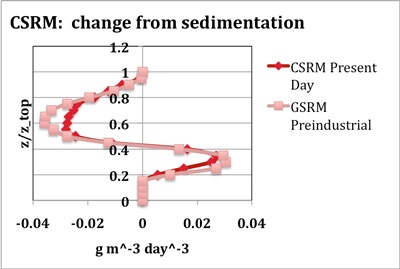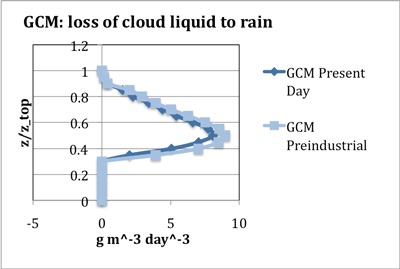Aerosol/warm cloud interactions
We have examined uncertainties in aerosol/cloud interactions caused by the variety of mechanisms and assumptions used in their treatment (Chen and Penner, 2005). Climate models get vastly different results for the response of clouds to increasing aerosols (Penner et al., 2006), but they tend to show that both liquid water path and cloud fraction increase when aerosols increase. We have also used a cloud resolving model in order to adequately resolve the response of clouds to increases in aerosols. These models show that as aerosols increase, the liquid water path and cloud fraction can decrease, depending on the background meteorological conditions (Guo et al., 2007). GCM’s do a poor job of representing these responses because they don’t adequately resolve the sources and sinks of cloud water (Lee and Penner, 2010). We plan to continue these studies to determine how to improve the representation of these interactions in climate models.
Aerosol/cirrus cloud interactions
We have added a representation of gravity wave perturbations to the NCAR GCM to represent sub-grid scale processes controlling cirrus cloud formation (Wang and Penner, 2010). It is important to improve the representation of these interactions because the climate forcing caused by the nucleation of aerosols to form cirrus clouds can be both positive or negative, depending on the method of representation (Penner et al., 2009). We continue to work on improving this representation in order to determine the climate impacts of particle emissions from aircraft (and other particles).



